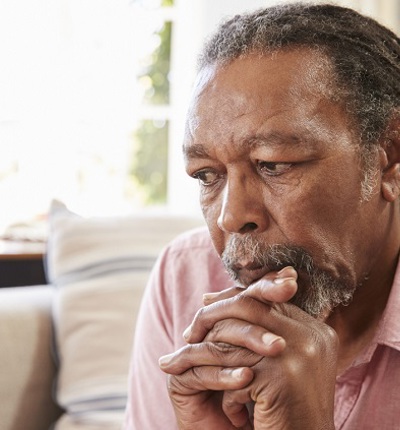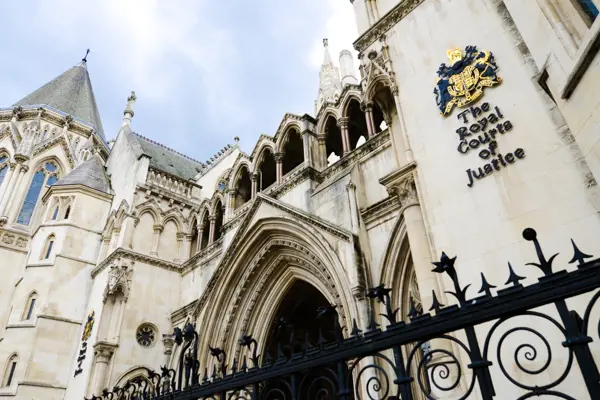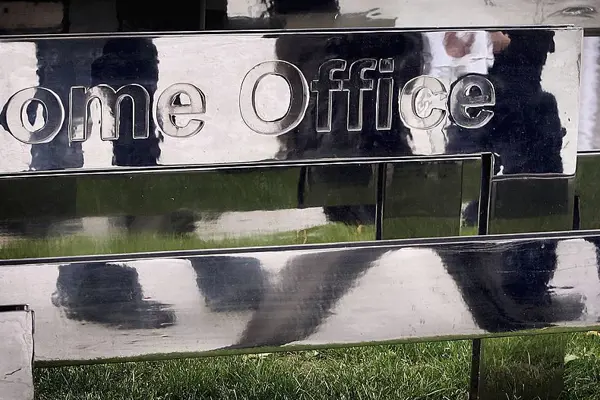
Who said pandemics don't discriminate?
Shereen Brogan and Gene Matthews of the human rights department discuss the impact of the COVID-19 pandemic on the BAME community.
Posted on 09 June 2020
Over recent weeks there has been a flood of information and publications highlighting the disproportionate impact of Coronavirus disease 2019 (Covid-19), caused by Severe Acute Respiratory syndrome coronavirus 2 (SARS-CoV-2), has had and is continuing to have on the BAME community.
In early April 2020 the Intensive Care National Audit discovered that out of nearly 2,000 critically ill patients, 35 per cent were BAME despite these groups only making up 14.5 per cent of the English population.
In mid-April ITV published figures from NHS England indicating that 16.2 per cent of Covid-19-related deaths were from BAME ethnicities. BAME groups are also more likely to die in intensive care.
More recent figures from the Office for National Statistics (ONS) reveal that the risk of Covid-19 related deaths amongst ethnic minorities is significantly higher than the risk to those of White ethnicity.
Black males are 4.2 times more likely to die from Covid-19 and Black females are 4.3 times more likely to die from Covid-19 than White males and females. Members of Bangladeshi, Pakistani, Indian and mixed ethnicities are also known to be at an increased risk of Covid-19 related death compared to members of the White population.
While age is supposedly the greatest risk factor for coronavirus, the BAME population is significantly younger than the White population, so why are BAME people more likely to be affected?
Health issues
One seemingly sensible explanation suggests these figures relate to the pre-existing health issues and morbidities that are prevalent among some of the BAME communities. It is commonly known that people of South Asian descent may be more likely to develop coronary heart disease than White Europeans.
Those from African or African Caribbean backgrounds may be at a higher risk of developing high blood pressure and having a stroke. People from African, African-Caribbean or South Asian backgrounds are more likely to have type 2 diabetes than the rest of the population. These are all underlying conditions which could potentially increase and exacerbate health risks during the pandemic.
Studies have linked vitamin D deficiency to a weakened immune system and as we know, people from BAME community groups often have increased melanin levels which affect vitamin D absorption. This particularly affects BAME groups living in the northern hemisphere, which could potentially result in compromised immunity.
While these all seem like genuine reasons for why the pandemic has hit BAME groups the hardest, there are other factors that increase the risks of Covid-19 which some ethnic minority groups are less likely to face than members of the white community.
BAME groups, for example, are less likely to smoke, are less likely to drink hazardous, harmful or dependent levels of alcohol than White groups and Asian groups have lower rates of cancer than White groups.
So, while there are some heightened risks for members of the BAME community in relation to health, this does not seem to tell the whole story, with many believing it linked to the social inequalities which BAME members are more likely to face.
Social inequalities
It cannot be a coincidence that there is a direct link between health and the social inequalities BAME groups face, including "longstanding structural and intersectional inequalities experienced” by these groups.
It is well known that BAME groups are more likely to face poverty, destitution and deprivation than the White community, which can lead to increased exposure to health risks for a number of reasons:
BAME groups are more likely to lack adequate housing and are also more likely to live in multi-generational and overcrowded households.
Those from Bangladeshi, Chinese, Indian, Pakistani and Black backgrounds are also less likely to be home owners than members of the white community and are more likely to share houses, further exposing themselves to health risks. It is commonly known that inadequate housing can increase the risk of health conditions and disability during childhood and early adulthood.
BAME groups are more likely to live in poverty and are more likely to live in densely populated, urban areas which lack access to green spaces than the rest of the population. Cities such as London and Birmingham have increased BAME populations and increased Covid-19 rates, thus people are more likely to be exposed to SARS-CoV-2.
Transport
BAME transport use and access to basic necessities is also a concern, BAME Londoners are more likely to use the bus and risk further exposure to the virus than White Londoners who in contrast travel more frequently by bike, car and black cab. Low income households have higher levels of non-car ownership and BAME groups in the UK are concentrated in this quintile.
BAME groups without their own vehicles may find it more difficult to practise social distancing when travelling and will have to go outside more regularly for necessities, as buying in bulk without the use of one's own vehicle is difficult.
Employment
BAME groups are over-represented as key workers, making them more exposed to coronavirus. One-third of all Black Africans are employed in key worker roles, while “Pakistani, Indian and Black African men are respectively 90 per cent, 150 per cent and 310 per cent more likely to work in healthcare than white British men”.
It has also been documented that BAME groups account for “18.4 per cent of NHS staff and more than a quarter of workers for TFL”.
These BAME workers risk their lives by being exposed to the virus, including Belly Mujinga, a mother-of-one who died after being spat on during her job as a railway ticket office worker and Trevor Belle, a Stratford taxi driver who was spat on at work and died a few weeks later from the Covid-19.
Not only does this highlight the risk of exposure of BAME key workers in the transport industry, but it highlights the continued abuse and discrimination that ethnic minorities face in their everyday lives.
Of all NHS and carer staff who have died after being diagnosed with Covid-19, shockingly between 60-72 per cent were from BAME groups, and the first 10 doctors to die were also from ethnic minority backgrounds.
NHS GP Adwoa Danso explained that not only are these groups disproportionately affected but they are also more likely to work “lower-down the ranks” in the NHS and are also less likely to be promoted, affecting their pay and forcing them to work undesirable hours, thus risking further exposure.
The outrageous lack of PPE became evermore apparent when Dr Abdul Mabud Chowdhury sadly died after contracting the virus. The Bangladeshi doctor wrote to the Prime Minister urging him to ensure that PPE was available to all NHS workers. It is crucial to understand why NHS staff are working without adequate protection and how this affects BAME groups considering they are less likely to complain about safety in the workplace and PPE.
Emergency legislation and communications disproportionately affect BAME people as some may face a language barrier which heightens the impact of a lack of clarity in emergency measures, school closures and guidance.
The government has recently announced that those “unable to work from home“ should be encouraged to go back which will further exacerbate the racial discrepancies in health and other inequalities. It may be considered an indirectly discriminatory measure against the BAME community because a disproportionate number of BAME groups work in these “hands-on”, low-paid roles which cannot be completed from home, such as distribution roles, take-away and food production, factory work, transport, security and communication work.
ONS statistics have also revealed that after considering age, socio-demographic characteristics and measures of self-reported health and disabilities, males and females of Black ethnicity are 1.9 times more likely than members of White ethnicity to die from coronavirus.
Similarly males in the Bangladeshi and Pakistani ethnic group were 1.8 times more likely and females in these ethnic groups were 1.6 times more likely to die from Covid-19 than their White counterparts when age, socio-demographic characteristics, measures of self- reported health and disability are taken into account.
While socio-demographic characteristics, socio-economic problems and health considerations may play a part in evidencing why BAME groups have been disproportionately affected during the pandemic, it is important to acknowledge other underlying problems which may account for the further disparity.
Healthcare inequity
To address this, it is essential to identify deeper structural problems BAME groups face within the medical sector including inaccessible healthcare and institutional racism.
Multiple studies show that there is racialised access to treatment and healthcare including that there are few resources and funds in place for migrants, preventing them from accessing their basic right to healthcare.
Migrants may also be asked to pay upfront and unaffordable charges in hospitals preventing them from accessing healthcare.
When members of the BAME community do access healthcare, there is evidence that in the Western world minority ethnic groups are not taken seriously, are subject to the effects of stereotyping, face language barriers and some discriminatory practices have caused misdiagnosis.
One example of the disparity and inequity in healthcare in the UK, is that Black women are much more likely to die from complications surrounding pregnancy and childbirth than white women. While social factors and economic wellbeing are tied to health, one US report found that Black middle-class women were more likely to die in childbirth than White working-class women.
Further studies have found that there are racial disparities in pain perception and pain management, with Black Americans systematically being undertreated for pain compared to White groups.
Doctors are more unlikely to diagnose emotional problems and psychiatric illnesses such as depression in Asian patients, resulting in them not getting the treatment they need. African-Caribbean people are three to five times more likely to be diagnosed and admitted to hospital for schizophrenia, which research has attributed to discrimination and stereotyping by health care practitioners.
On the other hand, Black groups are less likely to be diagnosed with other illnesses such as personality disorders and the pressures on Black women to be ”strong”, has prevented them from seeking help.
The tragic death of Kayla Williams, a member of the Black community highlights just one example of these problems mirrored in the UK healthcare system during the pandemic. The 36-year-old, mother of three died with severe Covid-19 symptoms but was told by paramedics that she “wasn’t a priority”.
This is sadly not the only story of members of the BAME community complaining that their relatives are not receiving adequate healthcare. Additionally, language barriers are making it difficult for some BAME groups to be consulted efficiently, take part and even consent to medical decisions, including the application of DNR orders.
While BAME groups are over-represented in healthcare, NHS and care worker roles, they are under-represented in more senior roles, including board-level roles.
BAME staff are also more likely to be disciplined for “insignificant things”, with a tendency to exaggerate minor mistakes and record them as ‘gross misconduct’. This type of treatment creates hostile working environments where BAME workers are more likely to "put up and shut up”.
BAME doctors are also likely to be treated differently and lack support from their peers, potentially making these staff less likely to complain about health, safety and contentment at work.
Clearly there is a darker story behind why the virus has affected BAME groups so viciously. We can only hope and push the Government in their inquiry to look into these significant, intersectional and complex disparities so that the changes which needs to be implemented are recognised across the multiple departments and institutions of society and not just in the health sector.


